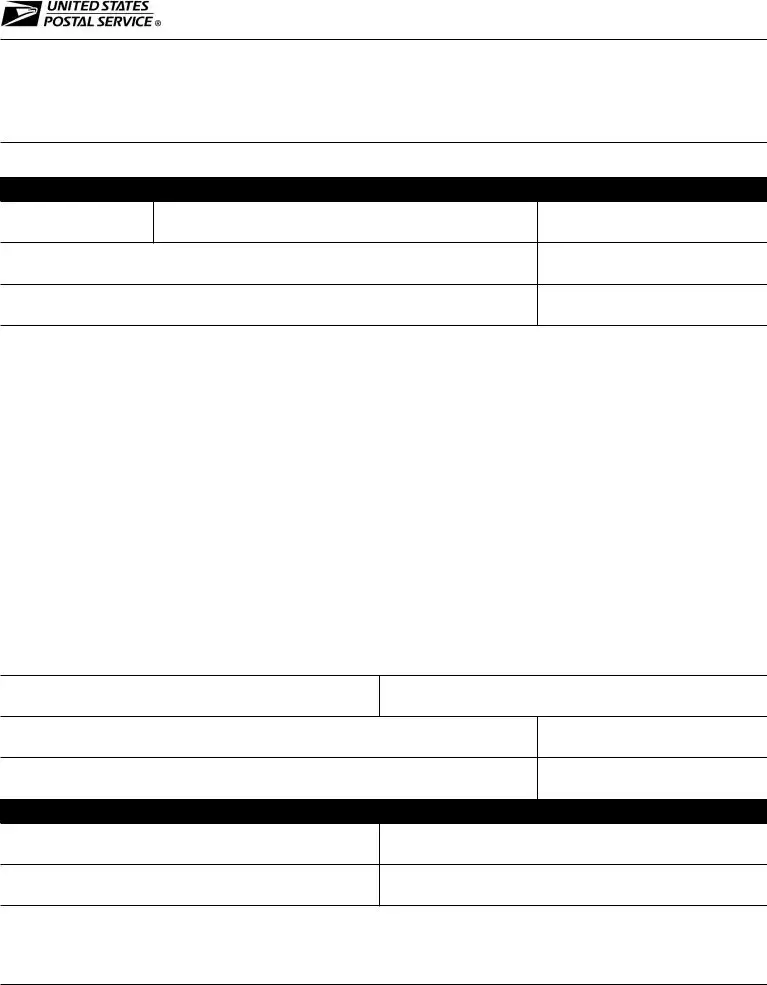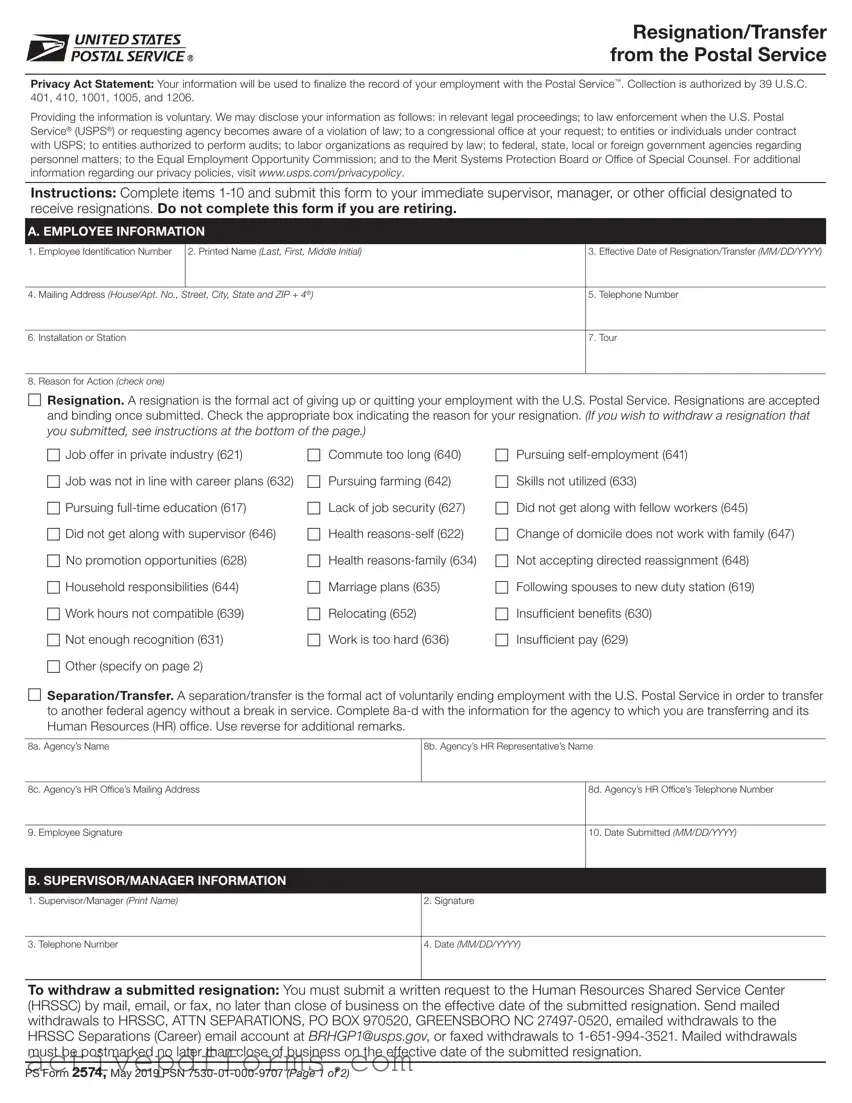
Resignation/Transfer from the Postal Service
Privacy Act Statement: Your information will be used to finalize the record of your employment with the Postal Service™. Collection is authorized by 39 U.S.C. 401, 410, 1001, 1005, and 1206.
Providing the information is voluntary. We may disclose your information as follows: in relevant legal proceedings; to law enforcement when the U.S. Postal Service® (USPS®) or requesting agency becomes aware of a violation of law; to a congressional office at your request; to entities or individuals under contract with USPS; to entities authorized to perform audits; to labor organizations as required by law; to federal, state, local or foreign government agencies regarding personnel matters; to the Equal Employment Opportunity Commission; and to the Merit Systems Protection Board or Office of Special Counsel. For additional information regarding our privacy policies, visit www.usps.com/privacypolicy.
Instructions: Complete items 1-10 and submit this form to your immediate supervisor, manager, or other official designated to
receive resignations. Do not complete this form if you are retiring.
A. EMPLOYEE INFORMATION
1. Employee Identification Number
2.Printed Name (Last, First, Middle Initial)
3. Effective Date of Resignation/Transfer (MM/DD/YYYY)
4.Mailing Address (House/Apt. No., Street, City, State and ZIP + 4®)
6. Installation or Station
8.Reason for Action (check one)
Resignation. A resignation is the formal act of giving up or quitting your employment with the U.S. Postal Service. Resignations are accepted and binding once submitted. Check the appropriate box indicating the reason for your resignation. (If you wish to withdraw a resignation that you submitted, see instructions at the bottom of the page.)
Job offer in private industry (621) |
Commute too long (640) |
Pursuing self-employment (641) |
Job was not in line with career plans (632) |
Pursuing farming (642) |
Skills not utilized (633) |
Pursuing full-time education (617) |
Lack of job security (627) |
Did not get along with fellow workers (645) |
Did not get along with supervisor (646) |
Health reasons-self (622) |
Change of domicile does not work with family (647) |
No promotion opportunities (628) |
Health reasons-family (634) |
Not accepting directed reassignment (648) |
Household responsibilities (644) |
Marriage plans (635) |
Following spouses to new duty station (619) |
Work hours not compatible (639) |
Relocating (652) |
Insufficient benefits (630) |
Not enough recognition (631) |
Work is too hard (636) |
Insufficient pay (629) |
Other (specify on page 2)
Separation/Transfer. A separation/transfer is the formal act of voluntarily ending employment with the U.S. Postal Service in order to transfer to another federal agency without a break in service. Complete 8a-d with the information for the agency to which you are transferring and its Human Resources (HR) office. Use reverse for additional remarks.
8b. Agency’s HR Representative’s Name
8c. Agency’s HR Office’s Mailing Address
9. Employee Signature
8d. Agency’s HR Office’s Telephone Number
10. Date Submitted (MM/DD/YYYY)
B. SUPERVISOR/MANAGER INFORMATION
1. Supervisor/Manager (Print Name)
To withdraw a submitted resignation: You must submit a written request to the Human Resources Shared Service Center (HRSSC) by mail, email, or fax, no later than close of business on the effective date of the submitted resignation. Send mailed withdrawals to HRSSC, ATTN SEPARATIONS, PO BOX 970520, GREENSBORO NC 27497-0520, emailed withdrawals to the HRSSC Separations (Career) email account at BRHGP1@usps.gov, or faxed withdrawals to 1-651-994-3521. Mailed withdrawals must be postmarked no later than close of business on the effective date of the submitted resignation.
PS Form 2574, May 2019 PSN 7530-01-000-9707 (Page 1 of 2)
C. ADDITIONAL REMARKS
PS Form 2574, May 2019 PSN 7530-01-000-9707 (Page 2 of 2)


